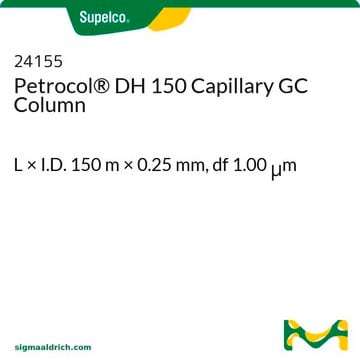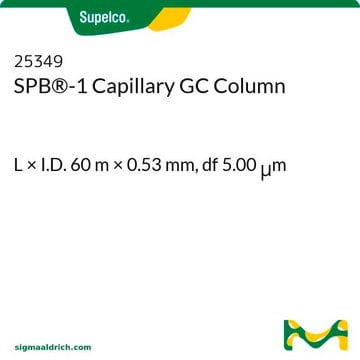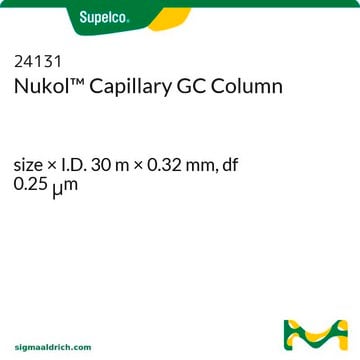24133-U
Petrocol® DH 50.2 Capillary GC Column
L × I.D. 50 m × 0.20 mm, df 0.50 μm
Synonym(s):
FS CAP Petrocol® DH 50.2 50M .20MM .50UM(47300)
About This Item
Recommended Products
material
fused silica
Agency
ASTM® D5134,D5441,D6729,D6730,D6773
meets requirements for USP G1, G2 and G9
parameter
-60-320 °C temperature (isothermal or programmed)
Beta value
100
df
0.50 μm
technique(s)
gas chromatography (GC): suitable
L × I.D.
50 m × 0.20 mm
matrix active group
Bonded; poly(dimethyl siloxane) phase
application(s)
chemicals and industrial polymers
petroleum
column type
capillary non-polar
Related Categories
General description
USP Code: This column meets USP G1, G2, and G9 requirements.
Phase:
- Bonded
- Poly(dimethyl siloxane)
- -60 °C to 320 °C (isothermal or programmed)
Application
Other Notes
Legal Information
Personal Protective Equipment
Choose from one of the most recent versions:
Already Own This Product?
Find documentation for the products that you have recently purchased in the Document Library.
Related Content
Complete offer for petrochemical testing including environmental and industrial hygiene monitoring solutions.
Chromatograms
suitable for GCOur team of scientists has experience in all areas of research including Life Science, Material Science, Chemical Synthesis, Chromatography, Analytical and many others.
Contact Technical Service






